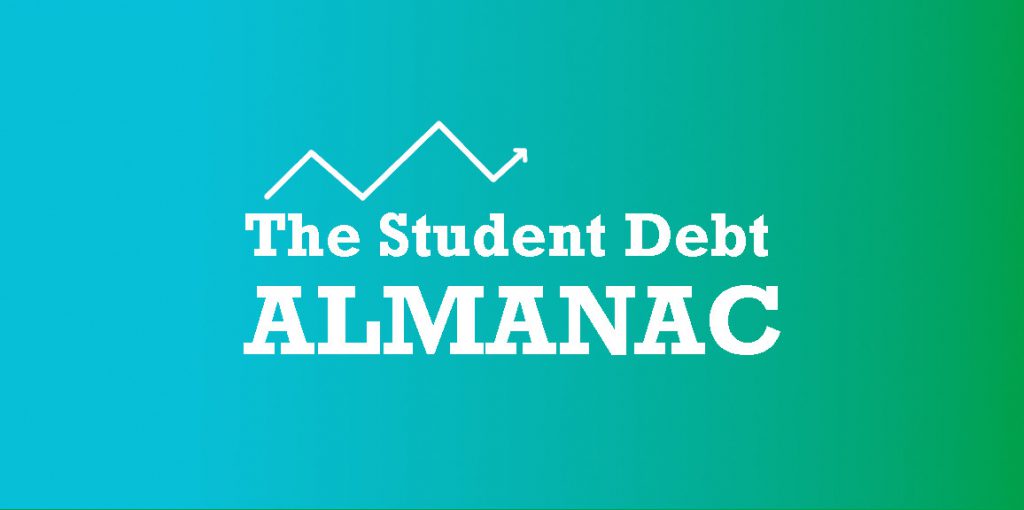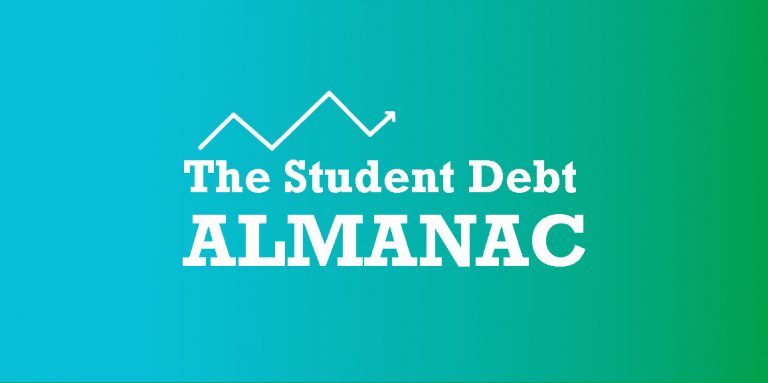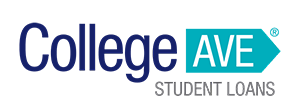With student loan debt rapidly increasing every year, it should be no surprise that student loan forgiveness has become such a popular topic in public policy debates. The current total student loan debt is nearly $1.6 trillion, the average student loan debt is $29,650, and these figures show little sign of slowing down.
The vast majority of student loan debt is comprised of federal loans, which are issued and managed by the government. A smaller amount is issued and managed by private lenders, such as banks, credit unions, and other financial institutions.
To help the public better understand some of the most critical elements, Purefy has compiled this Almanac of student loan debt statistics. We hope this will help students, parents, and graduates understand how important it is to make careful decisions when choosing a path towards higher education.
The following data have been collected from the Federal Reserve and the U.S. Department of Education, except where otherwise noted.
Table of Contents:
- Total Student Loan Debt
- Federal Student Loan Debt by Loan Type
- Overall Student Loan Debt by Loan Type
- Federal Student Loan Debt by Borrower Age
- Average Student Loan Debt by Age (Federal Student Loans)
- Federal Student Loan Debt by Repayment Status (Direct Loans Only)
- Federal Student Loan Debt by Repayment Plan
- Federal Student Loan Debt by Delinquency Status (Direct Loans Only)
- Student Loan Repayment Statistics
- Free Application for Federal Student Aid (FAFSA) Statistics (2017-2018 Application Cycle)
- Private Student Loan Debt Statistics
- States with the Highest Average Student Loan Debt
- Student Loan Default Rates and Delinquency Rates
- States with the Ten Worst Default Rates
- Student Loan Debt and Homeownership
- Student Loan Debt and Rural/Urban Migration Patterns
- Public Service Loan Forgiveness (PSLF) Statistics
- Teacher Loan Forgiveness Statistics
- Student Aid Statistics
- Average Tuition and Fees by School Type in 2018-2019
The 2 Best Companies to Refinance Student Loans
Our Top-Rated Picks for 2024 Offer Low Rates and No Fees

Total Student Loan Debt
- The total U.S. student loan debt for federal loans is $1.598 trillion.
- About 7.5 million borrowers took out federal student loans in the 2018-2019 school year.
- The average student loan debt is $29,650.
- The average student loan debt increased by an average of 4% per year between 1996 and 2012.
- 69% of bachelors degree students graduate with student debt.
- 83% of graduates from for-profit colleges had student loans. For-profit grads left school with an average student loan debt of $39,900. (source: TICAS.org)
- 6% of federal student loan borrowers owe over $100,000 in outstanding debt
Federal Student Loan Debt by Loan Type
As of April 30, 2019:
- Stafford Subsidized Loans: 29.7 million borrowers have $276.8 billion in outstanding debt
- Stafford Unsubsidized Loans: 28.8 million borrowers have $490.9 billion in outstanding debt
- Stafford Loans (Combined): 33.3 million borrowers have $767.7 billion in outstanding debt
- Grad PLUS Loans: 1.5 million borrowers have $71.3 billion in outstanding debt
- Parent PLUS Loans: 3.6 million borrowers have $89.8 billion in outstanding debt
- Perkins Loans: 2.2 million borrowers have $6.9 billion in outstanding debt
- Consolidation Loans: 11.8 million borrowers have $515.6 billion in outstanding debt
Overall Student Loan Debt by Loan Type
Of the $105.5 billion in student loan dollars issued in 2017-2018:
- 20% were for federal Subsidized Loans
- 46% were for federal Unsubsidized Loans
- 12% were for Parent PLUS Loans
- 10% were for Graduate PLUS Loans
- 11% were for nonfederal loans (state, institution, or private student loans)
Source: collegeboard.org
Federal Student Loan Debt by Borrower Age
As of April 30, 2019:
- There are 8.4 million borrowers aged 24 and younger, with $120.1 billion in outstanding debt
- There are 15.2 million borrowers aged 25 to 34, with $494.2 billion in outstanding debt
- There are 14.1 million borrowers aged 35 to 49, with $548.4 billion in outstanding debt
- There are 5.9 million borrowers aged 50 to 61, with $224.1 billion in outstanding debt
- There are 1.9 million borrowers aged 62 and older, with $67.8 billion in outstanding debt
Average Student Loan Debt by Age (Federal Student Loans)
| Age | Average Outstanding Federal Student Loan Debt |
| 24 and younger | $14,298 |
| 25-34 | $32,513 |
| 35-49 | $38,894 |
| 50-61 | $37,983 |
| 62 and older | $35,684 |
Federal Student Loan Debt by Repayment Status (Direct Loans Only)
| Repayment Status | Recipients (in millions) | Dollars Outstanding (in billions) |
| In-School | 7.2 | $130.1 |
| Grace Period | 1.2 | $24.7 |
| Repayment | 18.6 | $665.2 |
| Deferment | 3.4 | $110.4 |
| Forbearance | 2.7 | $118.7 |
| Default | 5.2 | $105.8 |
| Other* | 0.2 | $8.4 |
*Includes loans that are in non-defaulted bankruptcy and in a disability status.
Federal Student Loan Debt by Repayment Plan
| Repayment Plan | Recipients (in millions) | Dollars Outstanding (in billions) |
|
Level: 10 years or less | 11.4 | $219.9 |
|
Level: >10 years | 1.72 | $78.2 |
|
Graduated: 10 years or less | 3.11 | $88.3 |
|
Graduated: >10 years | 0.32 | $15.8 |
| Income-Contingent Repayment | 0.68 | $30.9 |
| Income-Based Repayment | 2.82 | $169.8 |
|
Pay As You Earn (PAYE) | 1.31 | $85.3 |
|
Revised Pay As You Earn (REPAYE) | 2.56 | $144.8 |
| Alternative | 1.08 | $36.6 |
| Other* | Data unavailable | $24.8 |
*Includes loans not currently listed on a repayment plan
Federal Student Loan Debt by Delinquency Status (Direct Loans Only)
| Delinquency Status | Recipients (in millions) | Dollars Outstanding (in billions) |
| Current (not delinquent) | 15.71 | $574.9 |
| 31-90 Days Delinquent | 1.27 | $39.1 |
| 91-180 Days Delinquent | 0.87 | $24.2 |
| 181-270 Days Delinquent | 0.61 | $15.3 |
| 271-360 Days Delinquent | 0.41 | $9.9 |
| In Collections | 0.07 | $1.6 |
Student Loan Repayment Statistics
- 20% of individuals with student loan debt from their own education were behind on their payments in 2017. This figure increased 1% year-over-year in both 2017 and 2016.
- Looking at those under the age of 30, first-generation college students are four times as likely to be behind on payments than children of a parent who holds at least a bachelor’s degree.
- Those who left school without a degree are most likely to be behind on payments.
- Individuals with higher debt levels are more likely to be current on their student loan payments. Only 13% of those with $100,000 or more in in debt were behind on their payments in 2017. Higher student debt levels are associated with higher levels of education, and in turn, increased job security/income.
- 23% of borrowers who attended a for-profit college are behind on their student loan payments. Only 9% of borrowers who attended a public college and 6% of borrowers who attended a non-profit college are behind.
- 29% of federal student loan borrowers are in income-driven repayment plans.
Free Application for Federal Student Aid (FAFSA) Statistics (2017-2018 Application Cycle)
- About 19 million people applied for federal student aid using the FAFSA.
- 61% of FAFSA applicants were female.
- 48% of FAFSA applicants were first generation college students (neither parent completed a college degree).
- 53% of FAFSA applicants were independent (not financially dependent on a parent or other individual).
Private Student Loan Debt Statistics
- About 15% of graduates’ debt is made up of private student loans. (source: TICAS.org)
- 5% of undergraduates took out private student loans in the 2015-2016 school year.
- 53% of private student loan borrowers borrowed less than the annual maximum for federal loans.
- 11% of private student loan borrowers did not apply for federal financial aid at all.
- Students attending higher-priced schools are more likely to use private student loans. (source: TICAS.org)
- The average private student loan size in 2015-2016 was $8,700, for borrowers that used them (source: collegeboard.org).
States with the Highest Average Student Loan Debt
| State |
Average Student Loan Debt |
| Connecticut | $38,510 |
| Pennsylvania | $36,854 |
| Rhode Island | $36,250 |
| New Hampshire | $34,415 |
| Delaware | $34,144 |
| New Jersey | $32,247 |
| Massachusetts | $32,065 |
| Alabama | $31,899 |
| Minnesota | $31,734 |
| Maine | $31,364 |
Source: TICAS.org
Student Loan Default Rates and Delinquency Rates
- 17% of federal student loan borrowers are in default, representing 11% of outstanding federal student loan dollars.
- Over 1 million federal student loan borrowers per year have entered default since 2015.
- The federal government had over $163 billion in defaulted loans assigned to private collections agencies at the end of September 2018.
- 8% of borrowers who began student loan repayment between October 1, 2014 and September 30, 2017 have defaulted on their federal student loans
- 24% of all Direct Loan borrowers were in default or were delinquent at the end of 2018.
- In 2018, over 1 million Direct Loan borrowers entered default.
- Borrowers who attended for-profit colleges are almost twice as likely to be delinquent on their federal loans than borrowers who attended public or non-profit colleges.
- Borrowers who did not complete their degree program are more than twice as likely to be delinquent on their federal loans than those who completed their degree.
- Borrowers enrolled in federal Income-Driven Repayment plans are four times less likely to have a 91+ day delinquency than borrowers enrolled in the standard 10-year repayment plan.
- 51% of borrowers who default on federal student loans have a dependent child. Only 26% of borrowers who have not defaulted had a dependent child. (source: TICAS.org)
States with the Ten Worst Default Rates
| State | Borrower Default Rate* |
| West Virginia | 17.70% |
| New Mexico | 16.20% |
| Nevada | 15.30% |
| Kentucky | 14.30% |
| Indiana | 14.20% |
| Mississippi | 14.10% |
| Arizona | 13.10% |
| Alabama | 12.90% |
| South Dakota | 12.90% |
| Oregon | 12.80% |
*For borrowers who entered repayment between October 1, 2014 and September 30, 2017.
Student Loan Debt and Homeownership
- A Federal Reserve study found that a $1,000 increase in student loan debt causes a 1%-2% drop in the homeownership rate for borrowers during their late 20s and early 30s.
- The increase in student loan debt between 2005 and 2014 reduced the homeownership rate among young adults by 2%.
Student Loan Debt and Rural/Urban Migration Patterns
- People with student loan debt are less likely to remain in rural areas than people without student loan debt.
- Individuals with higher levels of student loan debt are the most likely to migrate out of rural areas.
- Rural student loan borrowers who move to metro areas tend to pay down their student loans faster and are less likely to become delinquent that those who stay in rural areas.
- Rural student borrowers who move to metro areas are more likely to have a mortgage than those who stay in rural areas.
Public Service Loan Forgiveness (PSLF) Statistics
- 62% of employers of PSLF participants are government, and 38% are 501(c)(3) non-profit organizations, based on approvals of Employment Certification Forms.
- The total student loan balance for borrowers who have submitted PSLF employer certification forms is $97.9 billion.
- 73,554 borrowers submitted PSLF applications as of 3/31/2019.
- 864, or 1.17% of all PSLF applications have been approved as of 3/31/2019.
- 53% of applications were rejected due to not meeting the —qualifying payment” requirement.
- 25% of applications were rejected due to missing information on the application.
- Only 4% of applications were rejected due to employer-related issues.
- About $31 million in student loans have been discharged under Public Service Loan Forgiveness.
Teacher Loan Forgiveness Statistics
- $383.3 million in FFEL and Direct Loans were discharged in fiscal year 2018 under Teacher Loan Forgiveness, for 45 thousand borrowers.
- Since fiscal year 2009, 331.4 thousand borrowers have had $2.8 billion in FFEL and Direct Loans discharged under Teacher Loan Forgiveness.
Student Aid Statistics
- In 2017-2018, undergraduate students received an average of $14,790 in financial aid.
- The average undergraduate student in received $8,970 in grants in 2017-2018.
- The average graduate student received nearly 4 times as much in federal student loans than the average undergraduate student in 2017-2018.
Source: collegeboard.org
Average Tuition and Fees by School Type in 2018-2019
- $3660 for in-district students at public two-year schools
- $10,230 for in-state students at public four-year schools
- $26,290 for out-of-state students at public four-year schools
- $35,830 for private non-profit four year schools
Source: collegeboard.org




















